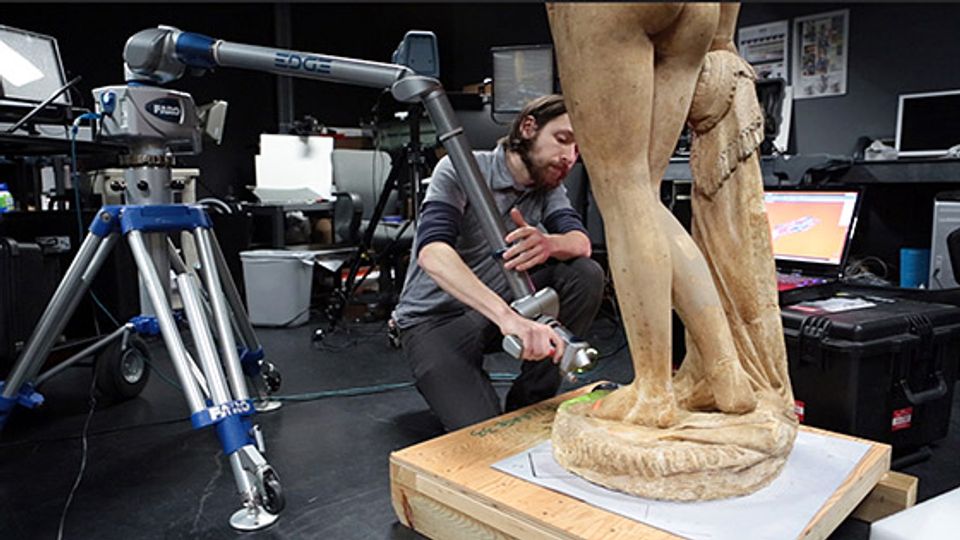
Karen Lemmey, American Art's sculpture curator is organizing an installation that will include Hiram Power's Greek Slave, one of the most popular sculptures of the 19th century. As part of her preparation, she is working with Smithsonian X 3D, part of the Institution's Digitization program, to create a 3D model of the Greek Slave. Karen, fills us in on the process.
Recently, Smithsonian X 3D, the Smithsonian Digitization Program's efforts to create 3D models of important collection objects, scanned a plaster example of Hiram Powers's Greek Slave at the American Art Museum. The data collected from the scan will be used to create a permanent digital record and model of this fragile and unique object offering scholars and the public the chance to study the sculpture in closer detail. But the scan also opens the door for the replication of this sculpture through 3D printing. In fact, the data will be used to create a 3D digital model of the Greek Slave that will be publicly accessible and printable!
In many ways, 3D scanning is the twenty first-century equivalent of pointing, the mechanical method used to replicate sculptures in the nineteenth century. Both 3D scanning and pointing precisely measure the surface of the object. The recent scan of the Greek Slave employed three processes: laser scanning, structured light scanning, and DSLR photogrammetry. Hiram Powers meticulously recorded the laborious process of replicating his Greek Slave in his Studio Memorandum, preserved in the Archives of American Art.
Powers conceived of the Greek Slave as a sculpture to be produced in marble replicas, a common nineteenth-century studio practice. Powers and his contemporaries rarely carved the marble replicas themselves and instead relied on teams of artisans to produce the finished works. After completing a full-scale model of the sculpture in clay, Powers entrusted the model to professional plaster casters (formatori) who created a multi-part plaster mold, which was used to cast a durable plaster version of the sculpture. Master carvers then used the plaster cast as a measuring tool as they translated the composition into marble, covering the surface of the plaster cast with hundreds of pencil marks and metal pins (points) that served as registration marks for the pointing machine. The pointing machine, which resembles a drawing compass, was moved repeatedly from points on the plaster cast to corresponding areas on the block of marble to guide the carver's tools.
While the pointing machine was used in marble carving, a reductive process that involves removing mass from a solid block, the data collected from 3D scanning can be used to produce replicas through both reductive methods, such as routing, and additive methods, such as printing.
In July 2015, Smithsonian American Art Museum, in collaboration with the United States Patent and Trademark Office, will present Measured Perfection: Hiram Powers's Greek Slave, an exhibition featuring the pointed plaster of the Greek Slave along with sculpting tools, a pointing machine, and other materials exploring the replication of this famed sculpture.
Related Posts: Conservation: Cleaning Hiram Powers' Greek Slave and The Best of Joan of Art: Why Are There Holes in That Sculpture?


















